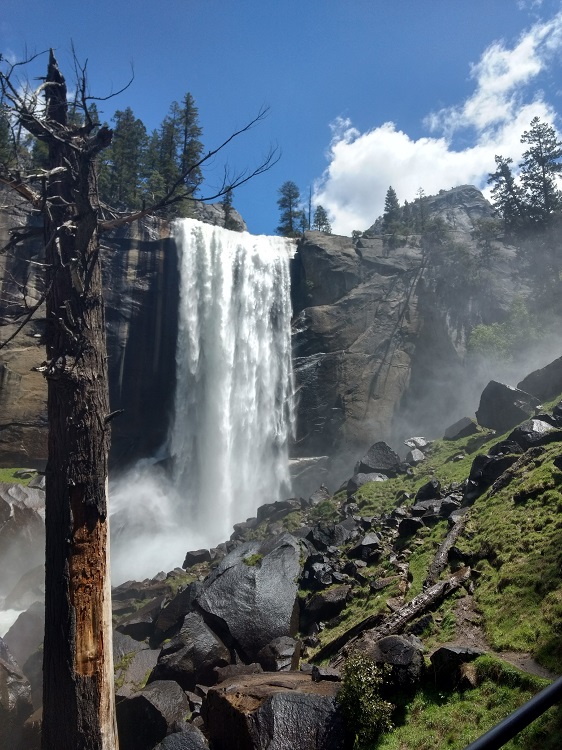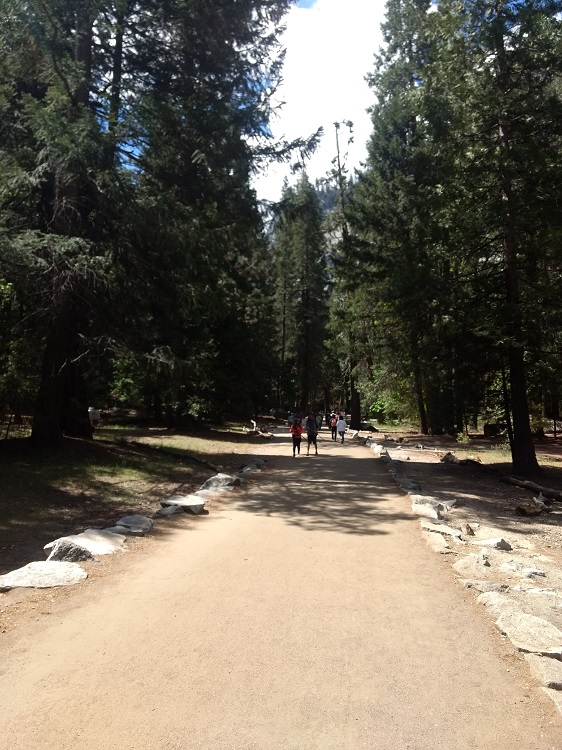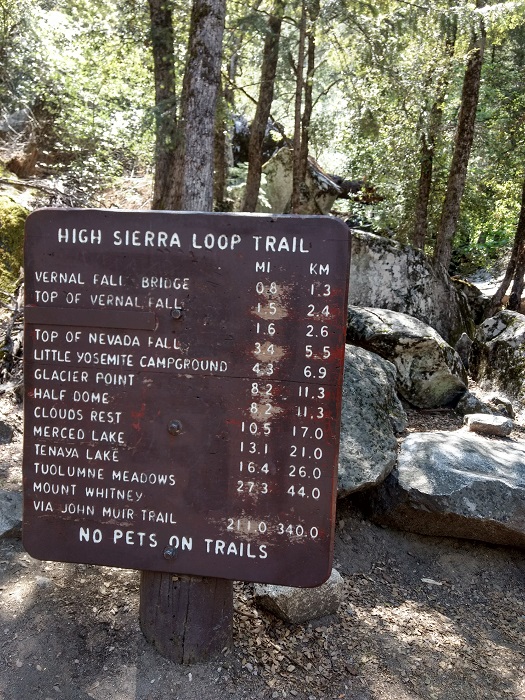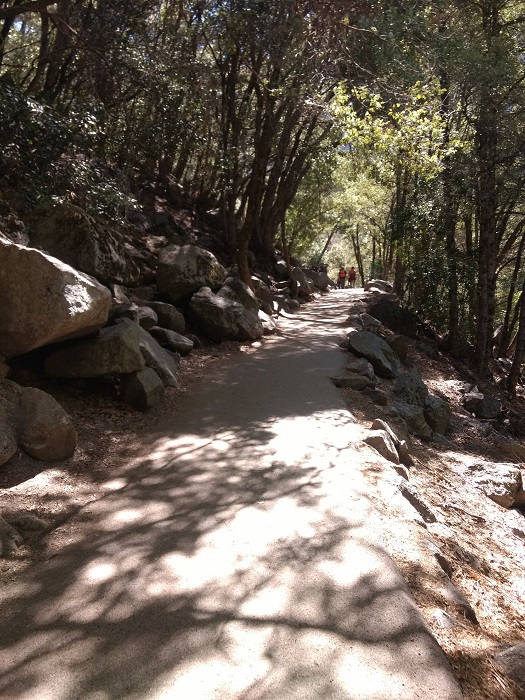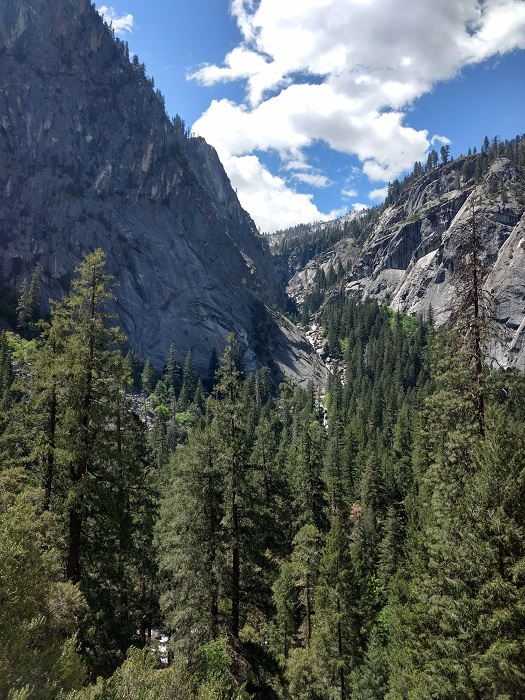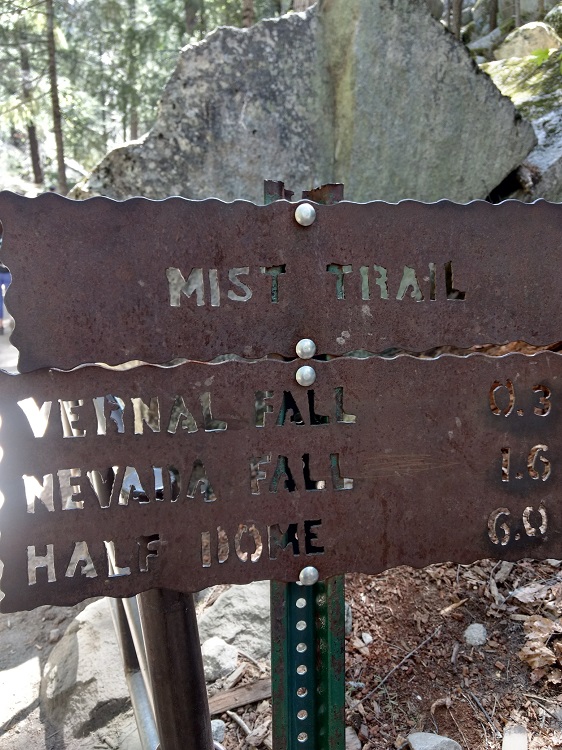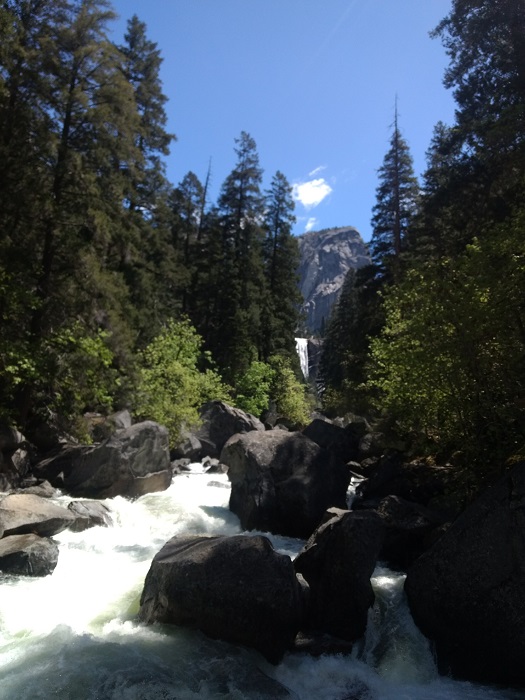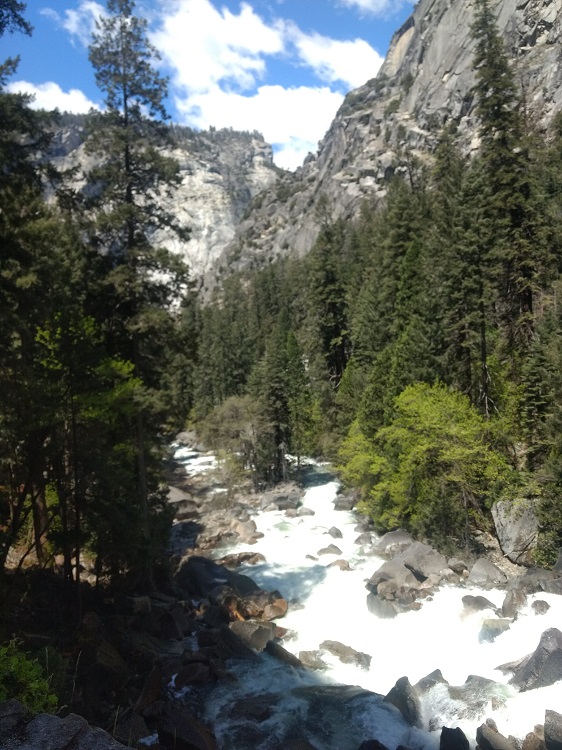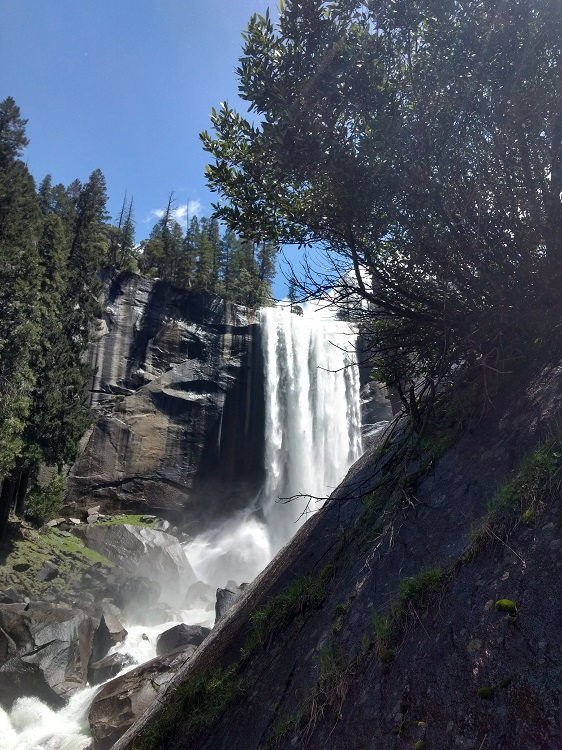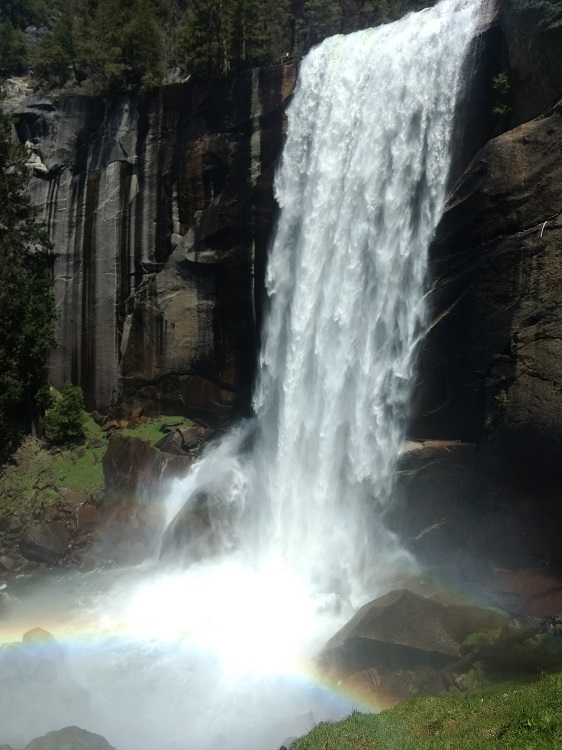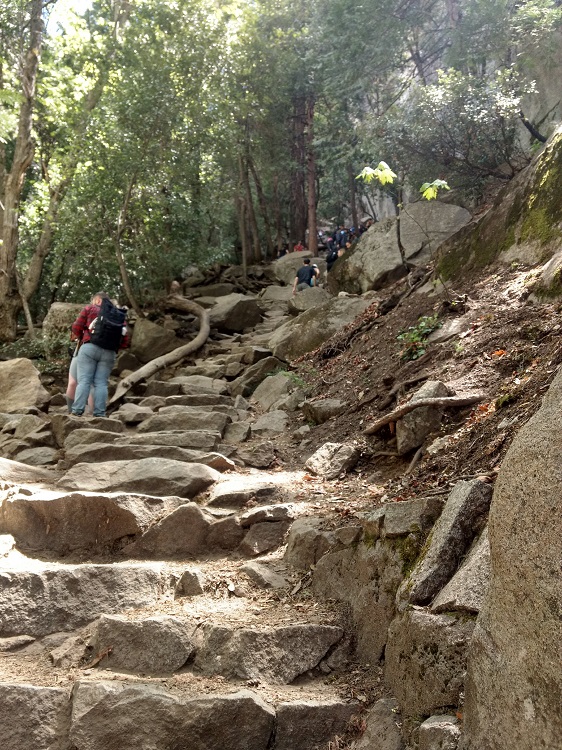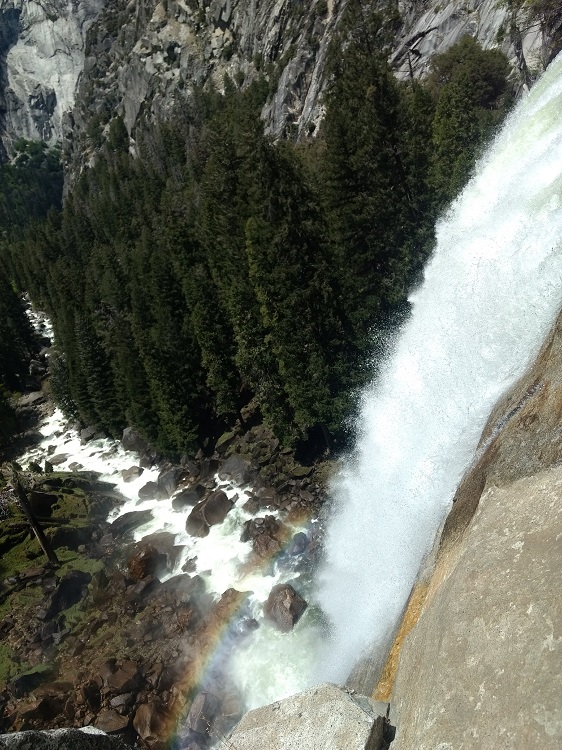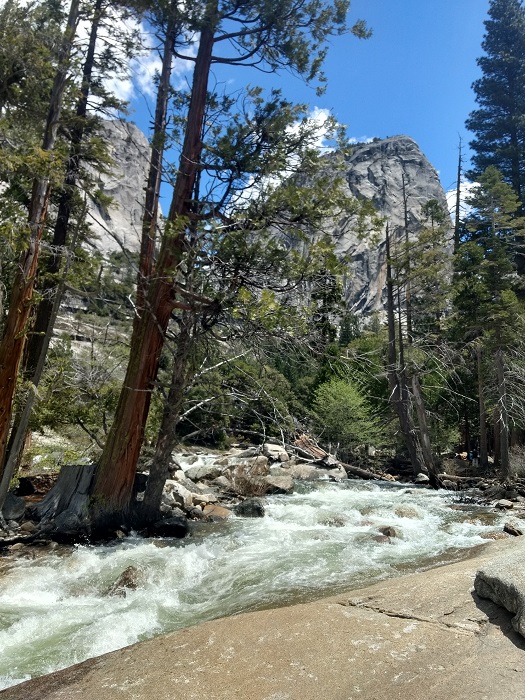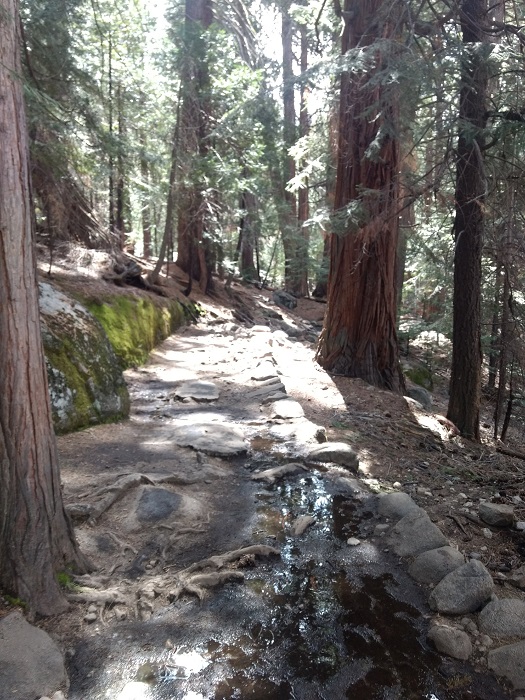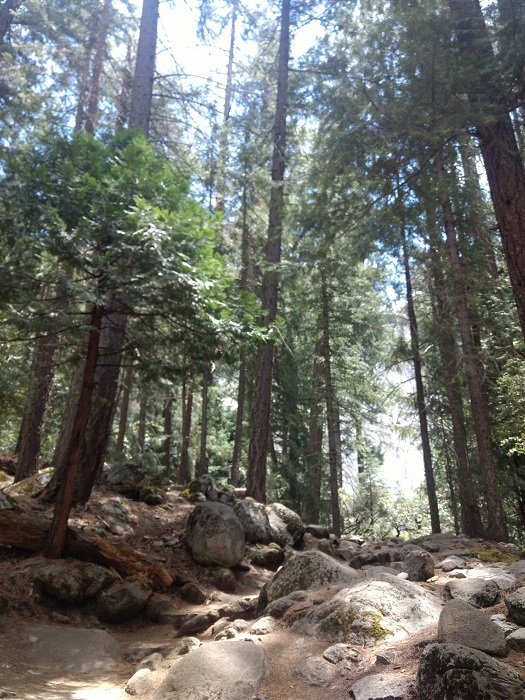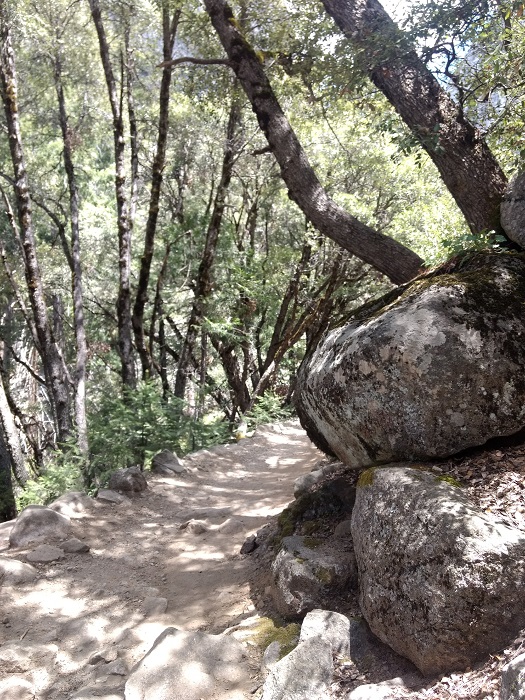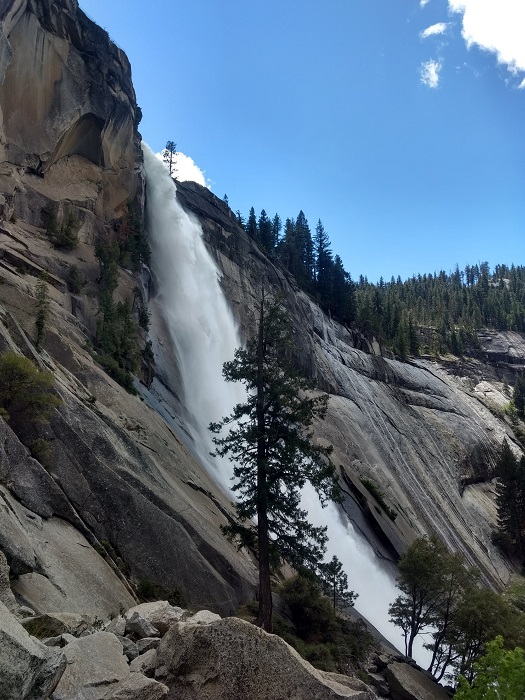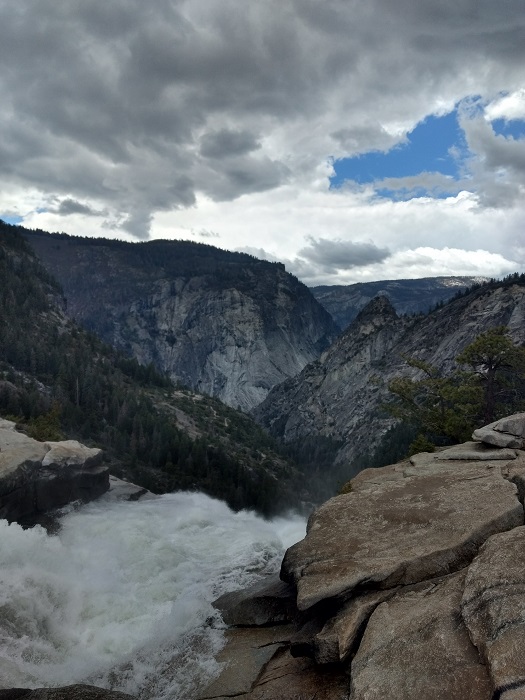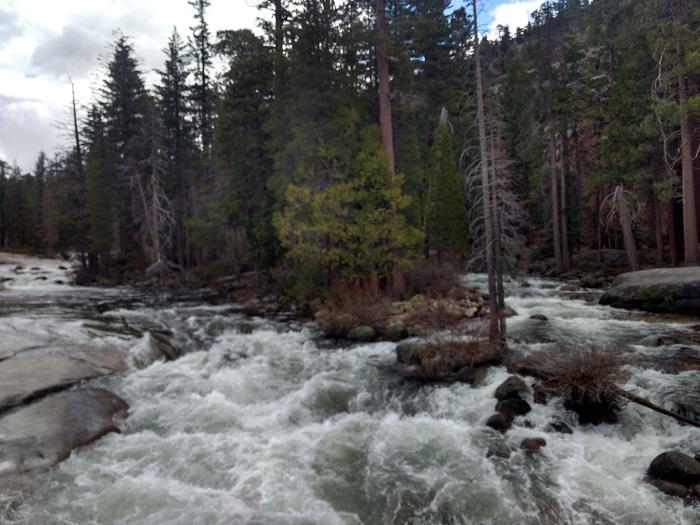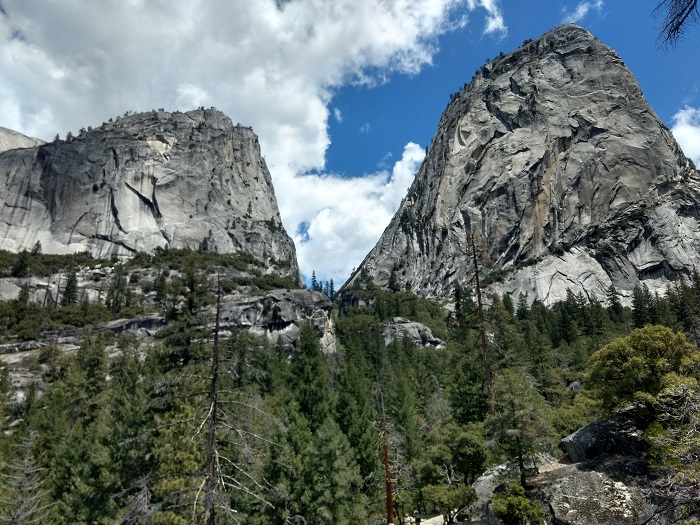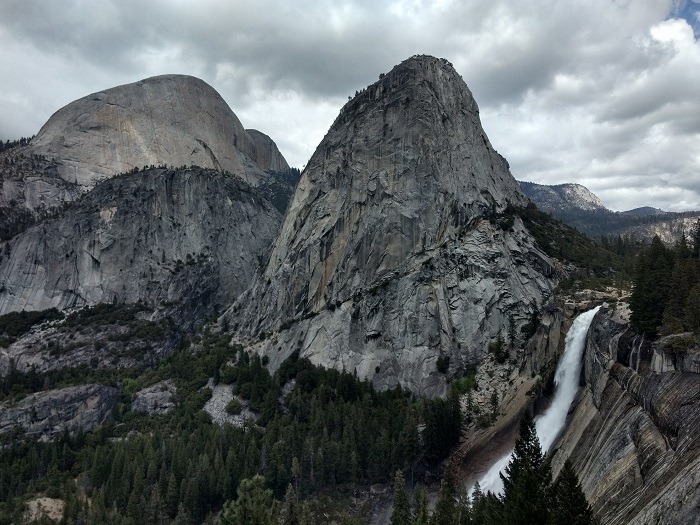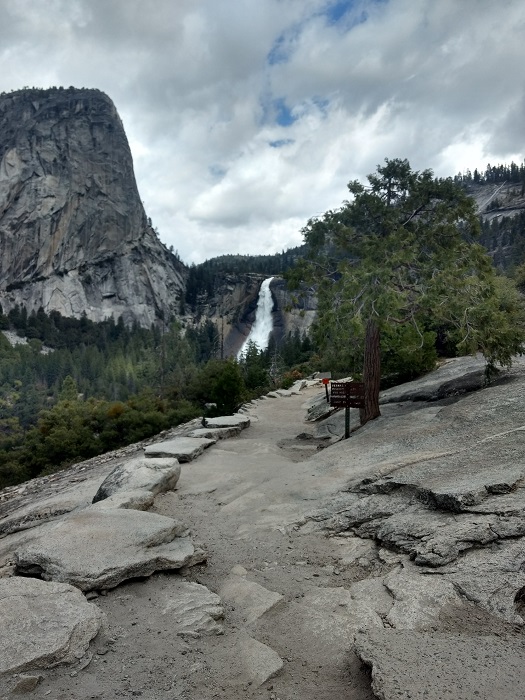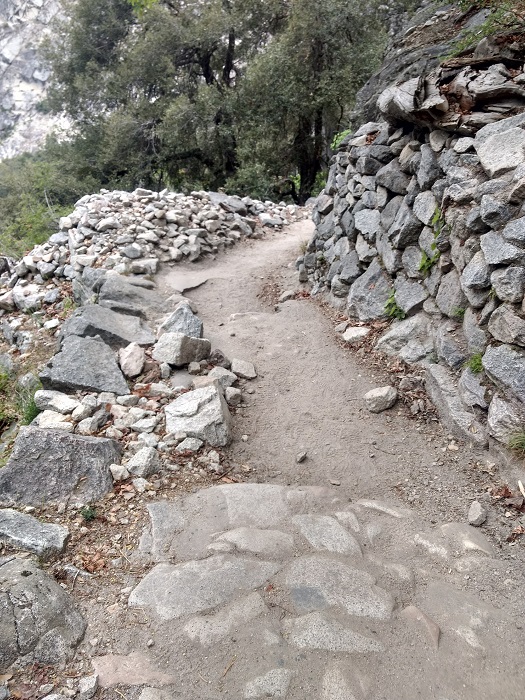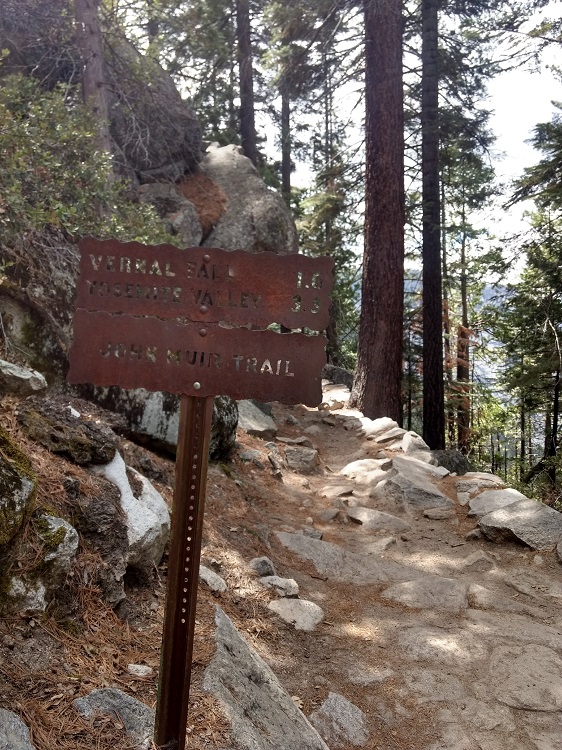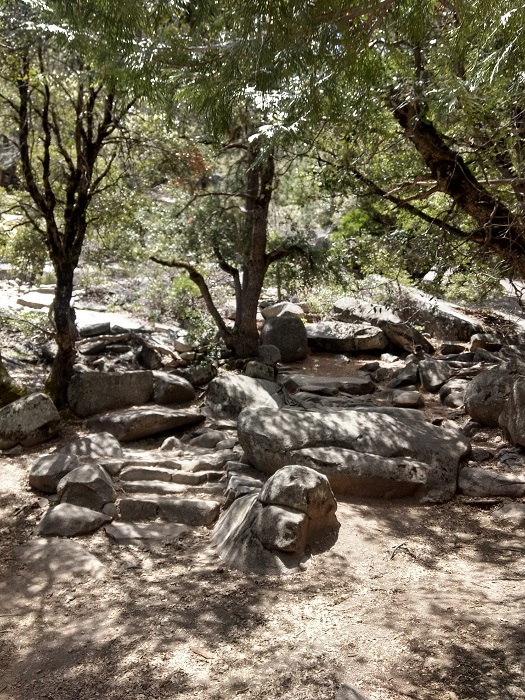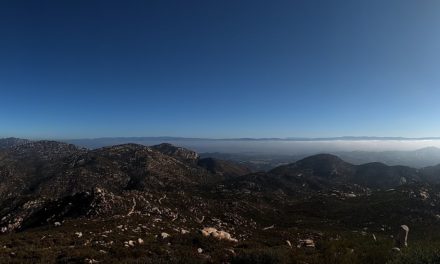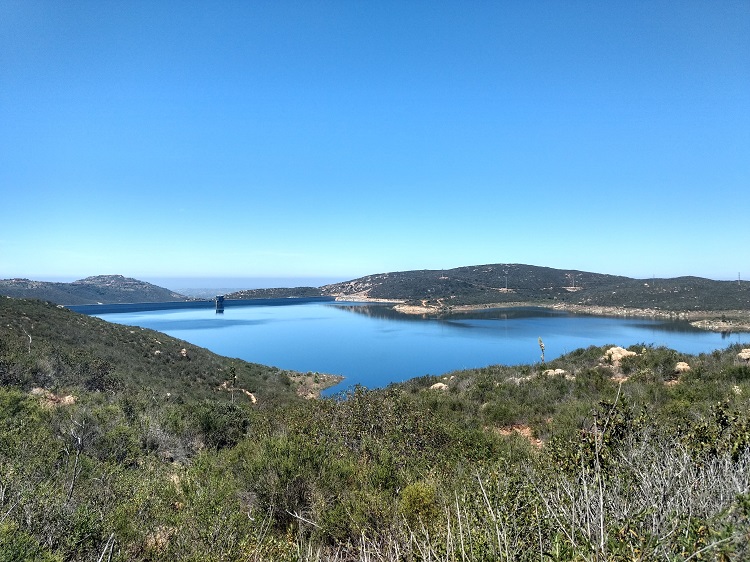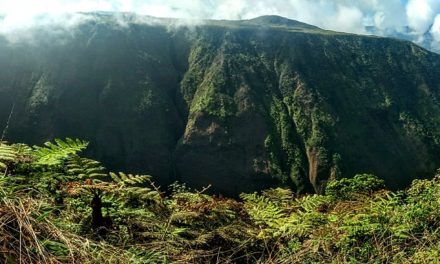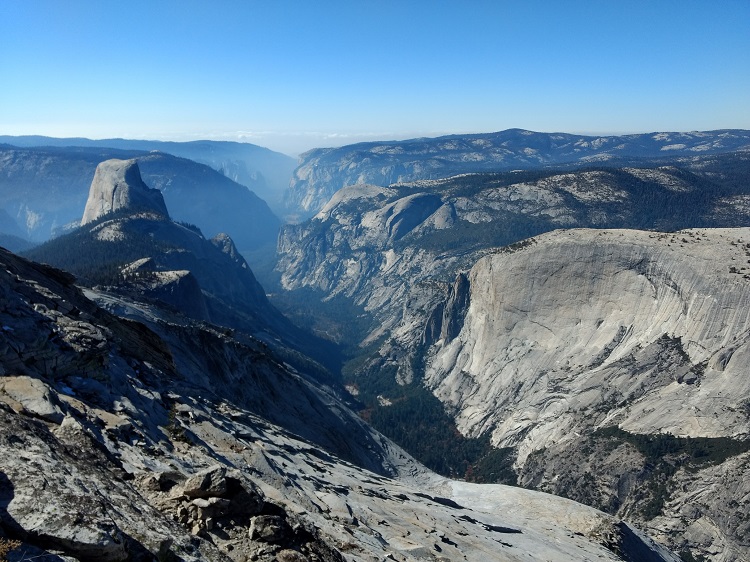Hiking Vernal and Nevada Falls via The Mist Trail
The Mist Trail features two incredibly beautiful landmarks of Yosemite National Park: Vernal and Nevada falls. The trail also has a nice close view of Liberty Cap (a smaller dome that sits next to Half Dome) and the backside of the more popular, Half Dome. The ease of access is one of the things that make this trail so popular. A significant amount of the trail trail is paved up until the Vernal fall viewpoint. There are also two restrooms along the route. Both Vernal and Nevada falls are incredible sights. Many people stop just at the top of Vernal fall to take in the view of the fall and have a lunch. However, it is worth the short distance up to the Nevada fall to take in the beauty of the Merced River falling down cliff walls into Yosemite Valley.
On A Personal Note:
I’ve hiked this trail in both Spring during the peak snowmelt season and during the mid-fall when water runoff is at its lowest. While both times of year are beautiful, nothing compares to the Spring when the waterfalls are at their peak. When I hiked this trail the complete loop ended up being nine miles. This is longer than most posted routes because the trail takes you past Nevada Falls along the John Muir Trail and back down to the trailhead.
Keep in mind, you don’t need to complete the whole trail in order to view some of the magnificent sites that this trail offers. For those not as familiar to hiking or think they may not be up for the whole trail, consider some of the other viewing points mentioned below in the trail details.
Do you have any updates to the hiking trail or want to share your hike/pictures? Please leave a comment below.
- Overall Difficulty: 65%
- Overall Views: 100%
Vernal and Nevada Falls via The Mist Trail Quick Facts:
- Elevation: 6,137 feet.
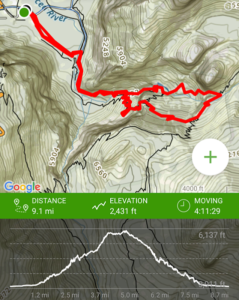
- Elevation Gain: 2,431 feet.
- Estimated Distance: 6.4 miles.
- My Actual Distance: 9.1 miles
- Estimated Time: 4-6 hours.
- My Time: 4:11 hours.
Vernal and Nevada Falls via The Mist Trail Directions:
Vernal and Nevada Falls via the Mist Trail Pictures:
- Starting out near the parking lot.
- These trails are clearly marked with several markers along the trail.
- Headed up to the Vernal fall lookout.
- Looking across the canyon from the Mist Trail.
- The view of Vernal fall from the lookout bridge. The view gets better.
- Looking down the Merced River from near Vernal fall.
- Nearing the mist portion of the trail.
- Vernal fall from the Mist Trail.
- Looking straight at Vernal fall.
- Headed up granite steps to the top of Vernal fall.
- Looking down to the bottom of Vernal fall from the top of Vernal fall.
- Looking up the Merced River making the way past Vernal fall.
- Crossing the Merced River as the trail makes its way to Nevada fall. Half Dome and Liberty Cap in the background.
- Headed up the side of Nevada fall.
- From the top of Nevada fall.
- The Merced River before Nevada fall.
- Liberty Cap and Half Dome from the Mist Trail.
- The view of Nevada fall, Half Dome, and Liberty cap from Half Dome.
- Nevada fall coming down the Mist Trail via the John Muir Trail.
- Coming down the John Muir trail along the Mist Trail.
- Headed down the John Muir trail into the valley.
Who Vernal and Nevada Falls via The Mist Trail Is For:
Advanced Hikers: This is a bucket list type of trail just because of the iconic views. The hike is relatively easy for anyone with any hiking or workout experience but the crowds might get on your nerves during the busy season.
Expert Hikers: Those hikeres that fall under this category will also love the trail. Take refuge in the fact that the crowd does tend to thin out by about half by the time the trail gets to Nevada Fall.
It’s always a good idea to be aware of what type of hiking level you’re at.
Best Time Of Year To Hike Vernal and Nevada Falls via The Mist Trail:
The late spring and early summer months while peak snowmelt is high is the best time to see the waterfalls but that’s not to say that this trail isn’t nice to hike during off times. I’d love to see this trail during the winter with snow on the ground. The November hike was nice because of the thinner crowds. Spring was nice because of the actual mist on the Mist Trail. Winter months can make certain portions of the trail impassable due to ice and snow. Summer months can be hot so plan accordingly. Some parts of the trail are made of granite rocks and can be slippery when wet.
Weather can be unpredictable any time of the year so always be aware of weather conditions.
Vernal and Nevada Falls via The Mist Trail Conditions:
I want to use a word of caution here: granite rocks are incredibly slippery when wet so although this is a relatively safe trail, please use caution and watch your step when going up the wet part of the trail. Most accidents and deaths that happen occur when people wander off the trail and get too close to the river and slip and fall in. After the mist portion of the trail, it continues on granite steps up to the top of Vernal Fall. There is one portion of the trail that is narrow and only really passable for one person at a time. Please be courteous to those going up. This part of the trail is lined with a metal handrail to use for those where slippery narrow surfaces and heights make people nervous. Once at the top of the waterfall, the there is a viewing point at the Vernal Fall overlook and a large granite slab that is popular for picnicking. Do not go over the rails at the overlook – people have died doing this.
Heading To Nevada Fall
The Merced river continues through the meadow to the east past Vernal Fall and to the back of the valley wall. Once here the trail transitions to granite step switchbacks until the top. While heading up the switchbacks, the view of Nevada Fall spilling over the cliff will constantly be there to look at. At the top of the switchbacks the trail crosses paths with the John Muir Trail and there is a restroom located here. There is another viewing point at the top of Nevada fall. Again, do not go over the railing here. The top of Nevada fall is heavily traveled but less populated than Vernal fall. From the top of Nevada fall there are a couple of different ways to return to the trailhead. You can return the way you came up or you can come back down through the John Muir Trail or the winter route. The latter makes the trail longer but is more interesting as it makes a portion of the trail a loop instead of an out and back.
Coming down the John Muir Trail or the winter route is a series of switchbacks made up of mostly dirt and granite trails. Both trails will drop you off just shortly above the Vernal fall viewing point. Most of the trail is not exposed to the sun until the higher elevations of the trail near Nevada fall. Rain, snow, or ice can make portions of the trail dangerous or impassable. Be aware of weather conditions. Weather can change suddenly in this area throughout the year. Dress appropriately for seasonal temperatures and conditions.As a reminder, rattlesnakes can commonly be seen along portions of this trail. Poison oak is highly unlikely along the trail but is possible in some of the undergrowth off the trail. Therefore, stay on the trail. Be prepared to encounter all types of wildlife on this trail. I did see a bobcat on one of my visits.

